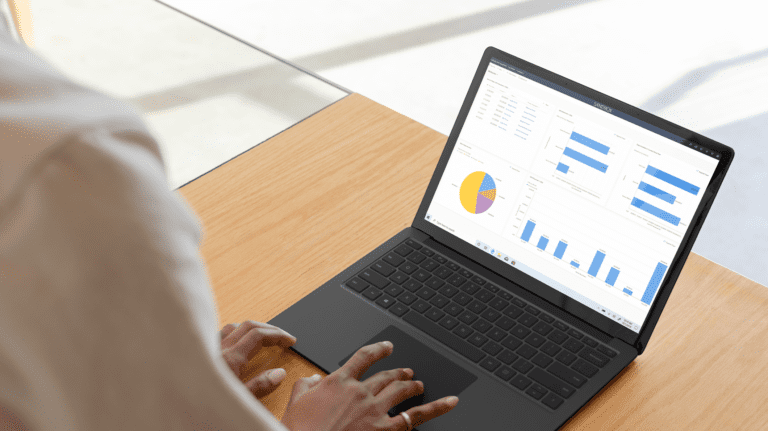When you’re starting a small business, social enterprise, law firm, tech firm or just starting to scope your idea one of the first things you think about is technology. Before you can do almost anything else you need to think of the technology to run your services or organisation, equip your staff with the laptops and software they need, and get your business connected to the internet.
You also need to decide on suitable hosting and storage options, whether they’re in the cloud or in a server that sits in the back office. Depending on the nature of your business, you might invest in a separate telephony solution and the handsets to go with it.
And in many cases, after the initial setup is over, IT becomes an afterthought. Many small businesses operate their IT estate on a wing and a prayer, in the mistaken belief that all the IT support they need can be provided by the businesses that supply their hardware, software or services. As we’ll show in this guide, that’s a dangerous and unsustainable way to run your business.
The small business (start-up , social enterprise, legal firm and more) IT & digital stack
But first, some background. It’s a simple truth that small businesses are using more in terms of IT & digital technology than ever before. Some of that will be desktop solutions that sit in a server on your premises. A growing proportion will be cloud-based tools, platforms and applications that live in a distant data centre and are accessed via the internet. Wherever your IT & digital stack is housed, you’d be lost without it.
Quite simply, we all rely on our IT & digital systems more than ever, for communication and collaboration, productivity and business administration. Where would your business be without Zoom or Teams, Office 365, QuickBooks, Salesforce or 20 other applications we could mention? For that matter, where would it be without email or, if you sell online, your e-commerce platform?
The IT & digital stack has grown even more during the pandemic, because of the need to equip and connect remote workers and, in many cases, switch to online sales and customer service. With many businesses contemplating the long-term adoption of remote or semi-remote (hybrid) work, most of these emergency innovations are likely to remain in place.
Other trends will only increase the importance of IT & digital. The government is expecting more businesses to file accounts digitally, for example. Many businesses are already investing in Voice over IP (VoIP) communications in preparation for the ISDN switch off in 2025. A new generation of digital services based on cloud computing, big data, virtual reality and the Internet of Things (IOT) is emerging for the small business market.
Digital transformation is now a destination for most businesses, even if they’re travelling towards it at different speeds. But as they grow and adopt more digital services, they increase their risk. When you depend on technology for everything from sales and marketing to customer services and back-office operations, you can’t afford for it to be anything less than fully functional.
The cost of unsupported IT & digital estates
What happens when you don’t support your IT & digital real estate? Most obviously, it breaks. But it can also undermine your business in more insidious ways, many of which won’t be covered by a service provider’s SLA. When bottlenecks build up in your network, for example, data traffic slows down and productivity suffers. When your systems and software aren’t optimised for the way you work, you miss out on efficiency benefits and better ways of doing things.
If the worst comes to the worst and you suffer an IT outage, the results can be seriously expensive. Imagine the damage to your business if you had to spend a day offline. Alarmingly, recent statistics show that every hour of unplanned IT & digital downtime costs businesses over £50,000.
Even if these figures spike for larger enterprises, small businesses can still face significant damage. In a separate survey, more than a third of Small businesses stated they had lost customers and over 17% had lost revenue due to IT & digital downtime.
And then there’s security, the elephant in every boardroom. Hackers don’t care how small or new your business is. If there’s data to be mined from your servers, or a ransom to be extracted in return for unlocking your core functions, you’re a potential target.
Which is why the average cost of a cybersecurity breach to UK small businesses is currently around £3,000, a figure which doesn’t take into account costs associated with recovering from the attack or reputational damage.
A less obvious risk associated with relegating IT & digital to an afterthought is that you lose ground to your competitors. Too many small businesses are working with inefficient, legacy IT solutions because they don’t have time to survey the market and see what else is out there. That means they’re unaware of new or upcoming services and applications that could make their businesses better.
The different options of IT & digital support
So how do small businesses support their ever-expanding IT estates? In many cases, the founder or CEO or director does it themselves, which is obviously an unsatisfactory solution unless they happen to be a bona fide IT expert. If not, this option is tantamount to not having any IT support at all.
If they can afford it, many small businesses employ an IT manager and leave the smooth running of the IT estate entirely in their hands. That’s clearly better than having no IT support at all, but it’s also expecting a lot from a single individual who presumably doesn’t want to spend 24 hours a day at work.
As organisations get larger, they tend to employ IT teams. This is the ideal in-house solution, but it is far beyond the reach of most small businesses. IT professionals don’t come cheap, and cybersecurity experts are a rarity in small businesses.
In our experience very few small and medium sized businesses have the comprehensive support they need to keep IT infrastructure online, optimised and secure. In which case, third-party assistance is essential.
What is outsourced IT & digital support?
If you have no in-house support, or your small (often one person) team is stretched to the limit, you need external IT & digital support. We really can’t stress this enough. Trying to go it alone without the expertise to do so is a recipe for disaster.
A good third party IT support service can become your IT team, without the expense of employing your own. It can monitor and maintain your systems, update services and software, and advise you on your IT roadmap, effectively operating as an IT consultant. An outsourced IT service should always offer round-the-clock helpdesk support.
What does that mean for your business? Well, it means you’re much less vulnerable to cyberattack, and the software and services you rely on are optimised to your needs. It means that, if something does go wrong, you should be back up and running in a much shorter time frame than would otherwise be the case.
IT & Digital support for small business from SI ICT
Of course, we would say all this. SI ICT is a third-party IT & digital service support provider, after all.
But think of all the times your internet connection drops out, downloads slow to snail pace, or video conferences stutter and stall. In our experience many small business owners don’t fully understand what is required every day to keep IT & digital systems fully protected and functioning normally. And why should you? That’s not your area of expertise.
But it is ours. That’s exactly where a good third-party provider comes in. At SI ICT we offer our technical services, and it means that effectively, we become your in-house IT support (albeit we mostly work remotely). You get a cost-effective IT support service that will proactively monitor, maintain and upgrade your systems and devices remotely, preventing issues before they happen. More for You covers everything a small business needs in terms of IT & digital support, including:
- 24/7/354 availability
- Helpdesk support
- On-site reactive visits
- Proactive monitoring of servers and devices
- Proactive consultancy
- Backup services
- IT roadmap
- Account management
If you have some in-house IT support, but it’s stretched, we’ve got you covered too. With support your resource, we won’t do everything, but we’ll do the kinds of things that free up your IT & digital staff for more time-sensitive and customer-focused projects.
It’s not a prescriptive service, though. We’ll do whatever it takes to help your IT & digital team out. If they just need to talk through an issue or get an informed opinion on a new piece of kit, we’re there.
IT support for small business: a vital ingredient for business success
We hope to have demonstrated in this guide that IT & digital support isn’t a “nice to have” or something you can muddle along without. If you want your small business to thrive in the long term, you need secure, optimised and efficient digital systems and services, and keeping them that way takes time and expertise. If your IT & digital systems / applications go down, so does your business.
But in-house IT & digital support is expensive, and few small businesses can afford the in-house IT resource they need to cover an ever-expanding IT stack.
That’s why outsourced IT support is vital. A good provider can take over your IT support requirement lock, stock and barrel if you need them to. Alternatively, they can be the extra support your in-house team needs to make sure your systems are always in tip top condition. They should certainly be agile, giving you the right support at the right time for your business needs, not a one-size-fits-all solution that burdens you with bells and whistles you don’t need and shouldn’t have to pay for.
At SI ICT, we don’t do off-the-shelf. We’ll work with you to understand where your business is now, where it wants to go, and the IT & digital support required to make sure your ambitions are fulfilled. Or to put it plainly, the level of IT & digital support you need is exactly the level of support we’ll give you.
For a consultation with SI ICT for IT & digital support services, please click here.



